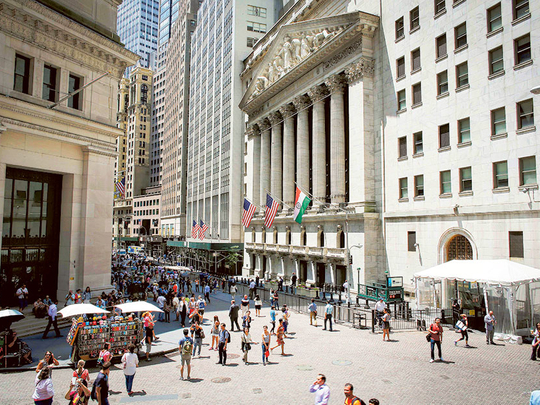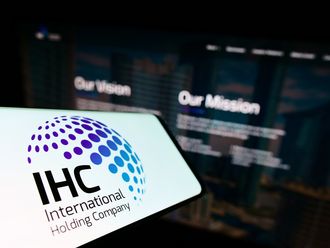
“2015 is the new 2007.”
That is the comparison being drawn by dealmakers in the towering offices of bulge bracket banks, and at their boutique rivals, on Wall Street, in the City of London and in Hong Kong. But almost as soon as the sentence is uttered, the bankers quickly add that, this time, the outcome “will be different”.
In many ways, the inputs are different, too. Compared with the boom years for mergers and acquisitions in the mid-2000s, the global economy is weaker, interest rates are at historic lows and many companies are sitting on large piles of cash. What is the same, eight years on, is bankers’ ability to push up valuations — so much so that this year is set to be the strongest for deals since the 2007 peak.
Steve Baronoff, head of M&A at Bank of America Merrill Lynch, admits that valuations in riskier sectors, such as biotech, are starting to look “toppy” but insists that, overall, most deals in the first half of the year have been carried out for strategic reasons.
Shell’s$81 billion takeover of BG Group is cited by bankers as a prime example of a “strategic” deal, despite it coming at a time where low energy prices suggest Shell may be overpaying.
In fact, the number of deals announced so far this year — a metric often used to gauge the robustness of an M&A cycle — is flat compared with the first half of 2014, according to Thomson Reuters. Deal sizes, however, have continued to expand. Transactions valued at more than $5 billion have increased in number by 42 per cent, as large companies suffering slower growth have turned to deal-making to boost revenues and market share.
Robert Pruzan and Blair Effron, the Wall Street dealmakers who founded Centerview Partners, say that in fast-moving M&A sectors, buyers are being forced to act sooner rather than later.
“In a rapidly consolidating environment, buyers are moving fast on what is a shrinking pool of targets,” Pruzan says. His partner Effron adds: “This is particularly true in pharma and telecom. Nobody wants to be left without options.”
Recent jostling between the five largest US health insurers shows the effect of this fear on companies. In recent weeks, Anthem made a $54 billion bid for Cigna, fearing that its smaller rival might try to do its own deal with Humana. Humana, however, is under pursuit from Aetna, which has offered it more than $30 billion. UnitedHealth, the largest US health provider, could yet intervene with a late offer to spoil somebody else’s union.
Joele Frank, founder of the eponymous New York M&A public relations specialist, says it is becoming more common for interlopers to break up their rivals’ deals: “Often, companies spend years studying a potential target, and if somebody else ends up making a bid before they do, it can result in a need to intervene with a more compelling offer.”
These multiparty battles, and a rise in the number of large unsolicited bids, have played a big role in inflating the value of transactions to “aspirational” levels, in the words of Paulo Pereira, partner at Perella Weinberg. “If current financing conditions remain benign and the stock market holds, it is inevitable that we will see more aspirational transactions,” he says. “It happens in every M&A cycle.”
Regulatory risks are also playing a larger role this year, after a number of large deals have fallen apart over antitrust issues. These include Comcast’s $45 billion takeover of Time Warner Cable and Applied Materials’ $29 billion merger with Tokyo Electron.
Citing “regulatory concerns” has consequently become a frequent defence tactic to fend off eager acquirers: Mylan, the generic drugmaker, turned down a $50 billion offer from Teva claiming regulators would object to the two groups’ pricing power. Similarly, Syngenta, the Swiss agri-chemical company, has rejected a $46 billion takeover from Monsanto, which also included a $2 billion break-up fee.
Given the size of deals being attempted, many are being funded partly with shares — which creates an additional risk for bid targets, as big deals may take as long as 18 months to close.
Piers Prichard Jones, partner at law firm Freshfields, says: “It can be particularly difficult to price-in risk on a stock deal, especially where there is a degree of uncertainty in terms of regulatory outcomes and timelines. As a result, buyers and sellers on these deals are more focused on deal and value protection mechanisms to mitigate these risks.”
In Europe, banks earned just 29 per cent of the total global fee pool — down from 32 per cent in 2014, and the lowest share since Thomson Reuters began collating data in 2000.
Unfazed, dealmakers remain optimistic about the level of activity to come, as executives seek ways to meet shareholder expectations.
Ferdinand Mason, partner at Jones Day, says: “Buyers are willing to pay a premium for targets that meet their selection criteria. It’s a case of quality and not quantity at the moment.”
Deal activity in the US and Asia, where overall transactions value hit an all-time record in the first half of 2015, is expected to continue. US banks have already seen their global share of advisory fees rise to 48 per cent, according to Thomson Reuters — up from a 2010 low of 42 per cent.
Future European deal-making will depend on Greece’s fate, but the UK is likely to remain an attractive M&A market, suggests Richard Sheppard, head of UK M&A at Deutsche Bank. “[The UK] has demonstrated an openness to foreign investment, it provides a flexible operating environment and is the home to a number of very successful companies,” he says.
However, Scott Matlock, a partner at boutique investment bank PJT Partners, plays down concerns that M&A activity could enter a bubble territory. “For an M&A boom, you need a strong economy and we simply don’t have that now — 2015 might feel like 2007, but it isn’t.”
— Financial Times












